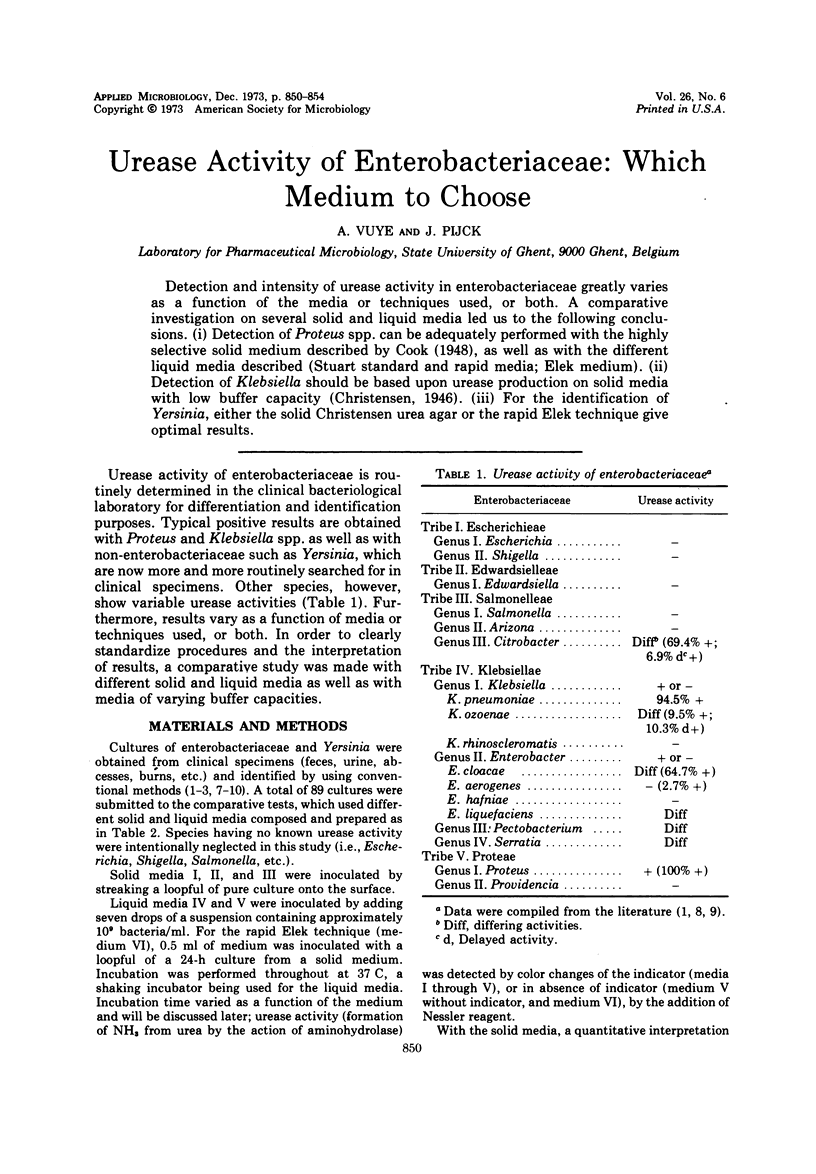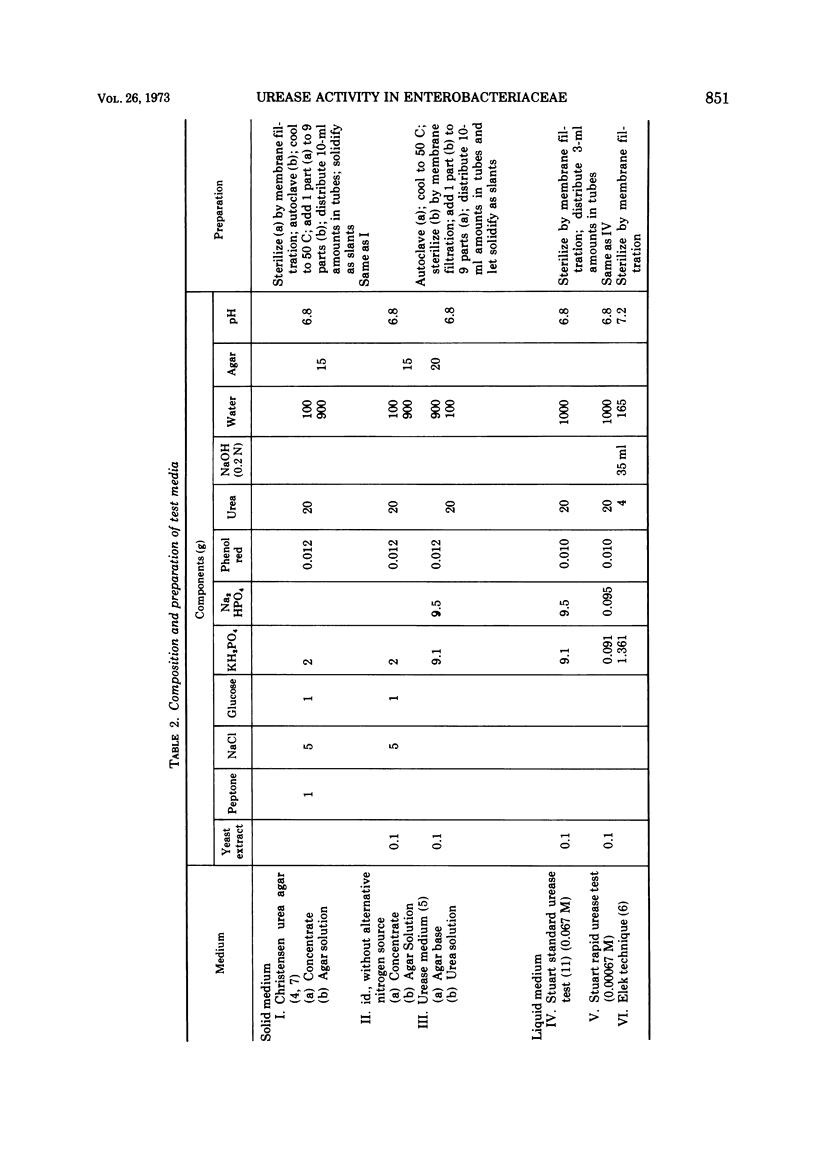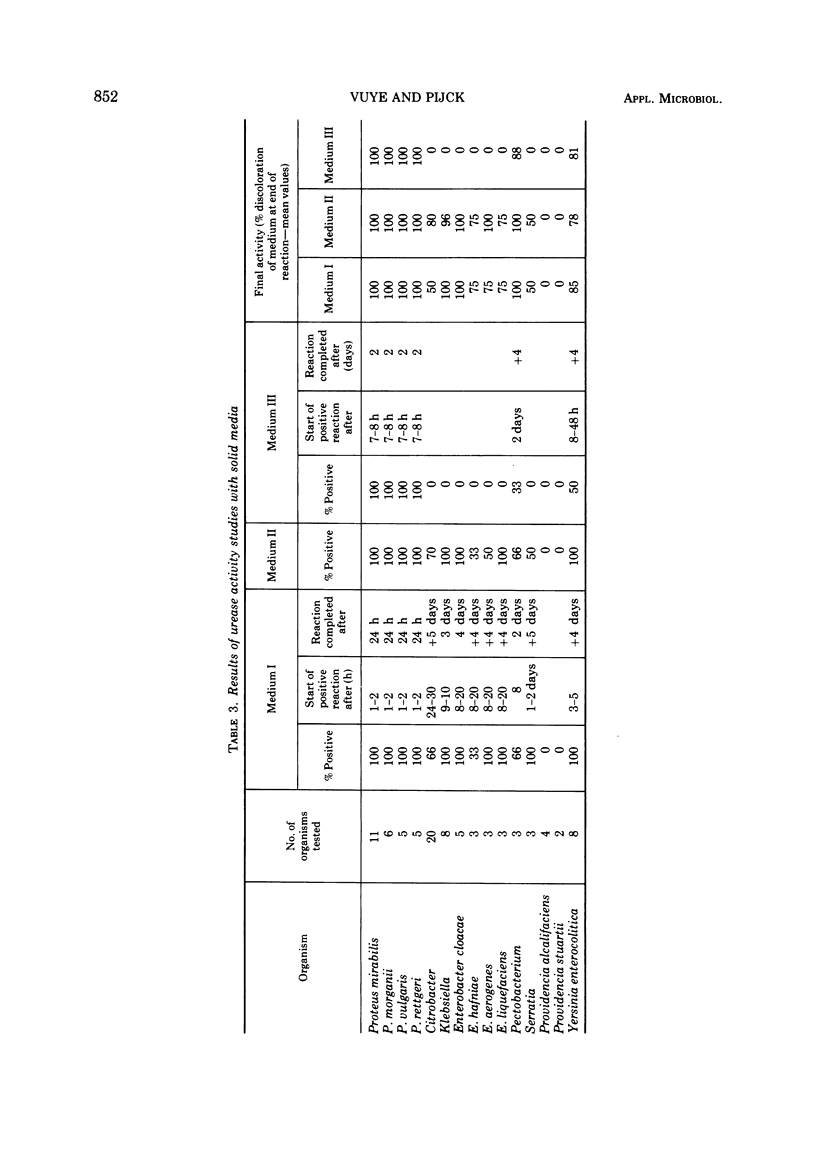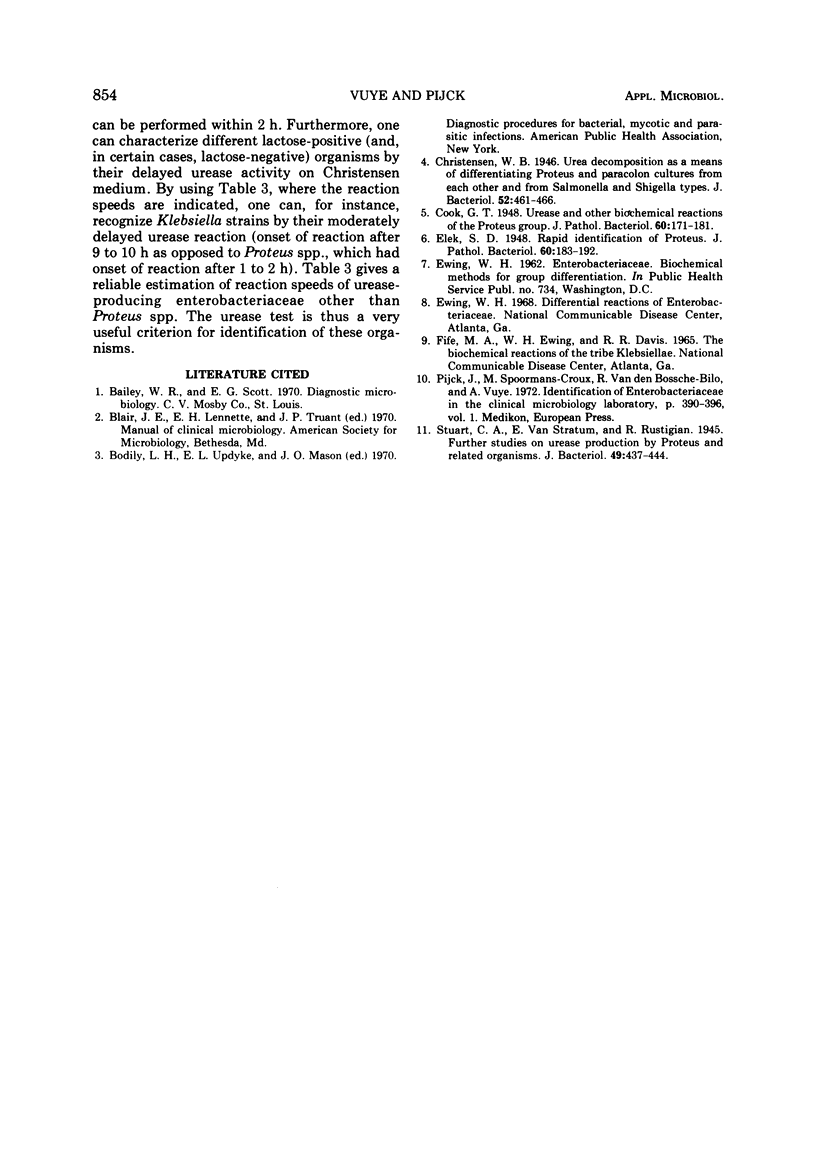Abstract
Detection and intensity of urease activity in enterobacteriaceae greatly varies as a function of the media or techniques used, or both. A comparative investigation on several solid and liquid media led us to the following conclusions. (i) Detection of Proteus spp. can be adequately performed with the highly selective solid medium described by Cook (1948), as well as with the different liquid media described (Stuart standard and rapid media; Elek medium). (ii) Detection of Klebsiella should be based upon urease production on solid media with low buffer capacity (Christensen, 1946). (iii) For the identification of Yersinia, either the solid Christensen urea agar or the rapid Elek technique give optimal results.
Full text
PDF




Selected References
These references are in PubMed. This may not be the complete list of references from this article.
- Christensen W. B. Urea Decomposition as a Means of Differentiating Proteus and Paracolon Cultures from Each Other and from Salmonella and Shigella Types. J Bacteriol. 1946 Oct;52(4):461–466. doi: 10.1128/jb.52.4.461-466.1946. [DOI] [PMC free article] [PubMed] [Google Scholar]
- Stuart C. A., Van Stratum E., Rustigian R. Further Studies on Urease Production by Proteus and Related Organisms. J Bacteriol. 1945 May;49(5):437–444. doi: 10.1128/jb.49.5.437-444.1945. [DOI] [PMC free article] [PubMed] [Google Scholar]


